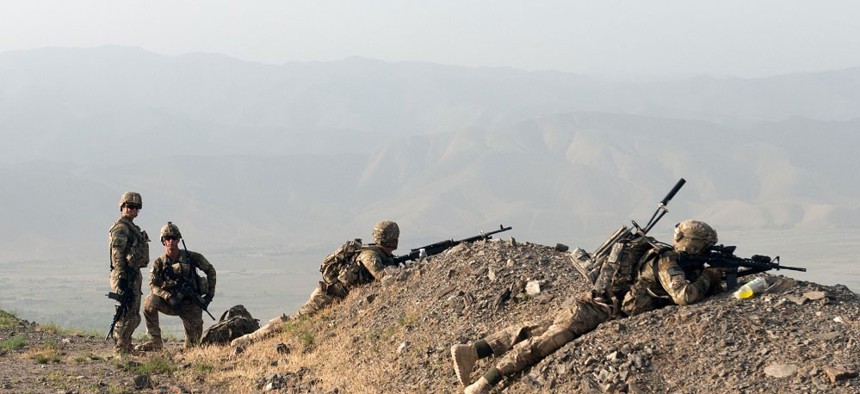
6th Squadron, 4th Cavalry Regiment by 1st Lt. Charles Morgan
Pentagon’s QDR Proclaims Military Ready To Do It All
The Pentagon's strategic plan assures Congress the U.S. military still will defeat anyone, anytime, anywhere – just for far less money. By Kevin Baron
The Pentagon released its highly-anticipated, four-year strategy review on Tuesday and with it a vision that the United States military can downsize, reconfigure and seek bold new innovations all while remaining ready to do everything from nuclear war to counterterrorism operations in defense of America’s borders.
“With the president’s budget, our military will be able to defeat or deny any aggressor,” Pentagon officials write in the 88-page Congressionally-mandated Quadrennial Defense Review, outlining President Barack Obama’s top-level priorities.
The QDR is a four-year review, but Defense Secretary Chuck Hagel presents it as a 10-year plan with three priorities: defend the homeland; building security globally, to aggression; and “remain prepared to win decisively against any adversary.”
Many of the recommendations within the QDR are already underway, such as keeping fewer ships and troops at the ready, winding down Afghanistan, keeping a close watch on the Middle East and increasing military-to-military relations across Asia.
It still proclaims the Defense Department’s intention to “rebalance,” but instead of rebalancing to the Asia-Pacific with a pivot, the Pentagon says it is rebalancing the military to be able to fight a “broad spectrum” of conflicts simultaneously. The U.S. will use the entire government to fight terrorism, the QDR says, but the military will ramp up its efforts to train foreign militaries to fight for themselves while retaining an ability to get directly involved with special operations forces, if desired. The QDR calls on regional combatant commanders to revise their contingency planning accordingly.
“Reflecting the requirements of this updated defense strategy, the U.S. Armed Forces will be capable of simultaneously defending the homeland; conducting sustained, distributed counterterrorist operations; and in multiple regions, deterring aggression and assuring allies through forward presence and engagement. If deterrence fails at any given time, U.S. forces will be capable of defeating a regional adversary in a large-scale multi-phased campaign, and denying the objectives of – or imposing unacceptable costs on – a second aggressor in another region.”
The QDR is perhaps the most awaited piece of Pentagon guidance the department issues – one in which the entire defense community from the arms industry to think tank strategists and Capitol Hill staffers will point to as justification for national security spending and strategy battles to come.
Hagel presents the QDR as a result of “tough choices,” including reducing the number of troops so that the military can keep higher technological capabilities and “preserve the health of the All- Volunteer Force.”
Read the entire QDR here.




